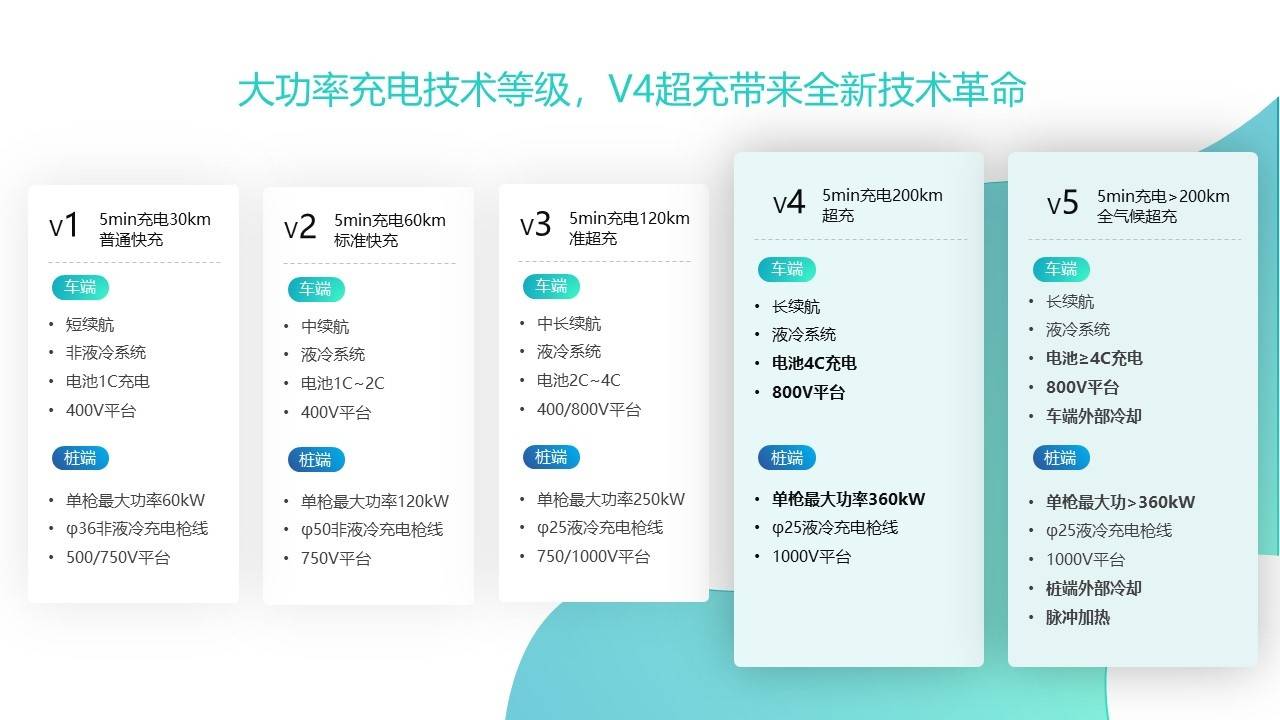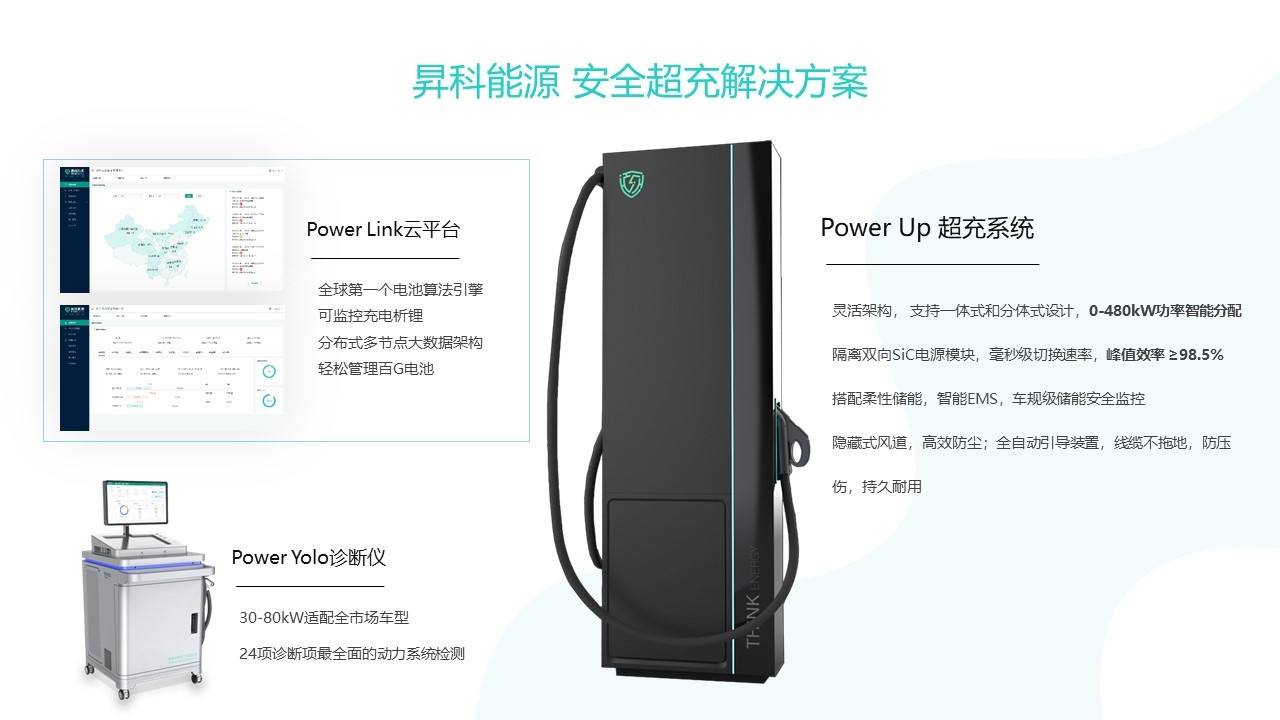Shengke Energy provides a complete solution to solve the pain points of V4 supercharge safety, and the expected market space is huge.
It is learned that recently, Shengke Energy, a V4-level new energy super charging solution provider, announced the completion of tens of millions of pre-A rounds of financing. This round of financing was led by Lanchi Ventures, and old shareholders often followed up with capital. It will be mainly used to quickly promote product development and commercial implementation.
Suntech Energy focuses on the V4 overcharge which is about to enter a period of rapid growth. Its full set of overcharging solutions focus on safety, the bottleneck restricting the development of overcharging, including intelligent hardware, diagnostic equipment, intelligent algorithms, and operation and maintenance platforms. By providing smart sensors and AI algorithms for vehicle manufacturers and battery manufacturers, and providing charging station operators with V4 overcharging systems and big data operation and maintenance platforms, a complete V4-level safe overcharging ecosystem is formed. The core customers served are close to 30, of which nearly 20 are TOP10 companies in the sub-industry.
Suntech Energy values the rapidly growing market of new energy. According to the “New Energy Automobile Industry Development Plan” issued by the General Office of the State Council at the end of 2020, by 2025, the sales of new energy vehicles will reach about 20% of the total sales of new vehicles. Based on the total sales volume of passenger vehicles in the country in 2020, the total sales volume of new energy passenger vehicles will be 4 million in 2025, which will increase year by year. Overcharging will become the main choice for long-distance travel, emergency charging in urban business districts, and selfless car owners in residential areas.
In the future, overcharge stations will be more popular than current gas stations.
The supercharge technology of Shengke Energy is characterized by more than 360kW, 800V vehicle platform, and 4C ultra-fast rechargeable battery. Shengke Energy CEO Chu Zhengyu told: Supercharged EMUs will reach 30 million in the next 10 years, an increase of 1,000 times, accounting for 30%-40% of the overall charging market, and the total market is 150 billion yuan per year.
High-power charging technology level
Currently, the typical application scenarios of V3 fast charging (250kW, vehicle platform 400-800V, battery<3C) are in Tesla's charging station, and fast charging services are provided for Model3 high-performance version and ModelY. The charging speed can be Supplement 200km cruising range in 15 minutes. Tesla said at the end of 2020 that the company is developing a charging pile with a maximum charging power of 350kW, and Cybertruck may be the first to adapt. There is no V4 overcharge service that is commercially operated globally. The main constraints are batteries, charging piles andThe safety and reliability of the power grid when dealing with large currents.
In response to the safety issues that restrict the development of overcharge, on the battery side, Sunco Energy has developed battery smart sensors and battery big data AI algorithms for the development of full life cycle lithium-free overcharge strategies and the early stages of faulty batteries Early warning. The use of lithium-free overcharge strategy can reduce the risk of lithium from the source, and maximize the charging potential of the battery within the safety boundary. The battery fault and health management framework BPHM, which is formed by the fusion of deep learning algorithms and battery mechanism models, can predict more than 90% of charging safety accidents several days in advance, and can monitor charging lithium and find faulty batteries in time. The application of the above two technologies can reduce the battery accident rate from the current one in 10,000 to one in a million.
On the charging side, Suntech Energy has also independently developed a V4 level overcharging system. The charging pile adopts a modular and expandable high-voltage and high-power architecture to flexibly provide charging power from 360kW to 480kW, and is highly compatible with no lithium precipitation. Overcharge strategy. In low temperature areas, it is necessary to adopt a V5 level all-climate overcharging system with two-way excitation heating function, which can provide the fastest 8℃/min battery heating capacity and millisecond-level two-way demand response.
In order to ensure the safety of charging stations, Shengke Energy has developed a big data operation and maintenance platform for charging stations, which uses AI algorithms to process battery and charging pile equipment data during charging, discover possible safety hazards and charging failures, and realize active safety protection And automated operation and maintenance can reduce charging accidents by more than 95%.
The operating costs of super charging stations mainly include power grid upgrades, parking lot leases, charging piles, and subsequent maintenance. The installed cost of ordinary charging piles is 40,000 to 50,000 yuan, and the installed cost of V4 supercharged piles is 250,000 to 300,000 yuan.
The team believes that the super charging station has a clear profit model. Because it is fast, the charged vehicle can be charged and left, so there is no charging station that needs to rent a large parking lot, high operation and maintenance costs, and low customer unit prices. Such as profitability problems, the average utilization rate of a single pile can reach more than 15%, and the service fee per kilowatt-hour can be reduced by 0.1-0.2 yuan correspondingly, which reduces the user’s charging electricity fee. The cost recovery period is within 2 years, and it is expected that there will be a boom in investment and construction.
The core products of Sunco Energy include: Power Up safety overcharging system, Power Link battery big data cloud platform, Power Yolo battery pack intelligent diagnostic instrument, etc.
Solution to Shengke Energy’s safety overchargingPlan
At this stage, Suntech Energy has provided new energy vehicle companies and battery suppliers such as CATL, BYD, South Korea SK, GAC, NIO, Wanxiang A123, and other new energy vehicle companies and battery suppliers, providing battery-side overcharge safety diversified solutions, and In-depth cooperation has been carried out with charging station operators such as Shell, State Grid, China Southern Power Grid, and Xingxing Charging on the overcharging safety hardware equipment and cloud safety solutions of the charging terminal. According to Chu Zhengyu, Shengke Energy has achieved a revenue growth of more than 20 times in 2020 compared to the previous year. Currently, it serves nearly 30 core customers, of which nearly 20 are TOP10 companies in the sub-industry.
The Battery Safety Laboratory of Tsinghua University was established in 2009, led by Academician Ouyang Minggao, and is one of the most authoritative research institutions in the field of battery safety in China. Founded in 2019, Thinkenergy is an innovative enterprise incubated by the Battery Safety Laboratory of Tsinghua University. It has gathered a group of R&D with rich experience in the fields of big data artificial intelligence, battery management, high-voltage electrical hardware development, and safety management. The core team comes from Tsinghua University, MIT, Chinese Academy of Sciences, etc.
For the next stage of development planning, Chu Zhengyu said: More super-charged models will enter the mass production stage. On the one hand, the company will continue to increase technological research and development, optimize technological processes, reduce costs, and enhance product competitiveness. On the other hand, the company will focus on the market to build a supercharger brand, deepen cooperation with new energy vehicle manufacturers, deepen empowerment for charging station operators, and provide smart electric vehicle owners with a fast and safe charging experience.
Electricity exchange can also achieve rapid energy replenishment. Regarding whether battery exchange or other energy replenishment solutions will become a competitive technology for V4 overcharging, Chu Zhengyu expressed his views: 1) Battery exchange standardization is a pain point and difficult to form. Universal service; 2) Overcharge and battery swap will exist in different application scenarios for a long time; 3) The core of any solution is the balance of safety, economy and convenience, and overcharge can take into account the above characteristics.
In addition, overcharging solutions may still need to strengthen the market’s popularity to allow consumers to accept more scientific but contrary to common sense views, such as shallow charging and shallow discharge can prolong battery life, and reasonable overcharging will not affect battery safety. Wait.

